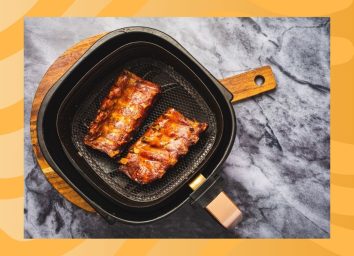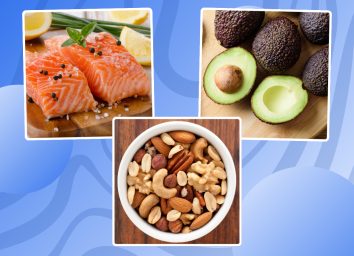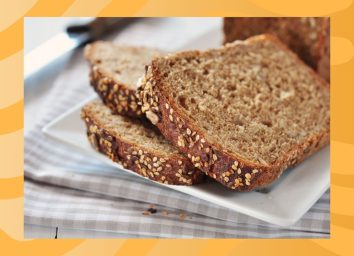The 18 Best Iron-Rich Foods You Can Eat
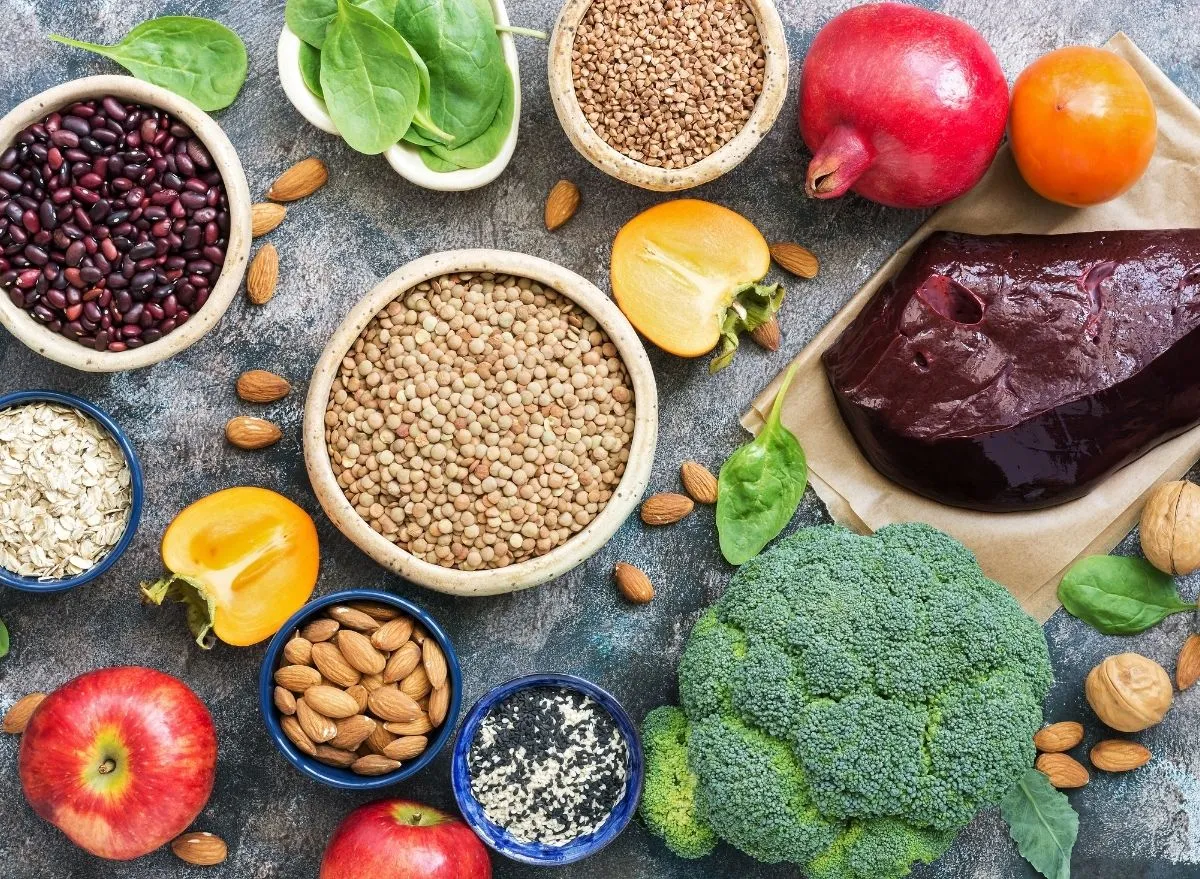
We often think of iron in terms of not getting enough of it. When you tell your doctor that you've been feeling tired, lethargic, or weak, they may automatically test your iron levels to make sure you have enough of this mineral in your body. This is because when you're not getting enough iron regularly, your red blood cells actually become smaller, which means that your blood will be unable to carry the regular amount of oxygen from your lungs to other parts of your body. This can possibly result in iron-deficiency anemia, which is what would lead to exhaustion and weakness of the body. Thankfully, there are plenty of high-iron foods you can add to your diet.
Benefits of consuming iron-rich foods
According to the National Institutes of Health (NIH), iron is responsible for making myoglobin, which is responsible for providing your muscles with oxygen, and hemoglobin, which carries oxygen from your lungs to the rest of your body. To get these benefits and keep yourself from becoming iron-deficient, you can add iron-rich foods to your daily routine.
There are two main types of iron found in food: non-heme iron and heme iron. Animal products contain heme iron and plant-based foods contain non-heme. Although both types have benefits, the body doesn't absorb non-heme iron as well as heme iron, according to the NIH.
How much iron do you need per day?
The daily value (DV) of iron depends mostly on your age group and sex, as well as your dietary patterns. The DV for women between ages 19-50 is 18 milligrams, while it is only 8 grams for men ages 19-50. But as mentioned before, plant-based non-heme iron is not absorbed as well as heme, meaning that vegetarians and vegans may need more iron in their diet than other people.
The best foods high in iron
The following high-iron foods are considered either "excellent" or "good" sources of iron. The FDA classifies an "excellent source" of iron as a food with over 20% of your daily value, and a "good source" as one that holds between 10-19% DV.
Oysters
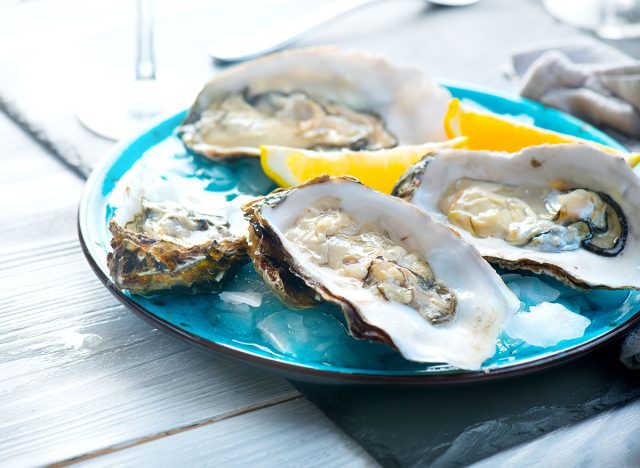
Iron per 3 ounces: 7.8 mg (43% DV)
Known by most as an aphrodisiac food due to its high zinc count, oysters are also loaded with iron and cover 43% of your daily value with only 3 ounces. Grab some white wine and your preferred oyster topping like vinegar or hot sauce, and chow down on this iron-filled mullosk.
Beef Liver
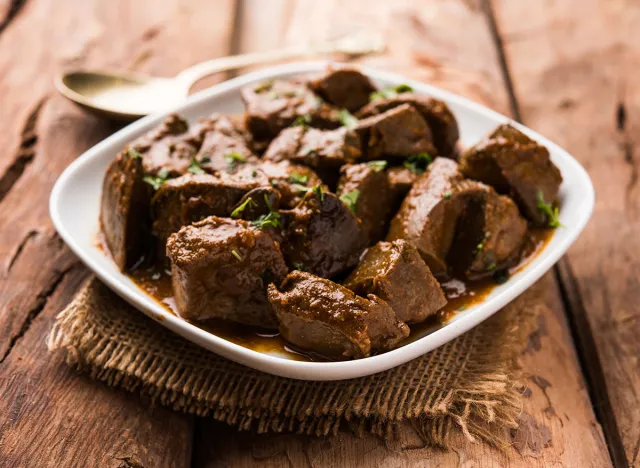
Iron per 3 ounces: 5.6 mg (31% DV)
Beef is your best bet when it comes to animal products that contain heme iron, but the liver will provide more iron than most other parts of the cow. If you've ever had beef liver, you may have noticed that it has a bit of an "irony" flavor—which makes sense when you learn that a serving of this organ provides over 30% of your daily value for this nutrient. You can fry up beef liver in a pan, but if you want a trick for consuming liver without tasting it at all, try cooking it up, chopping it into very tiny pieces, and mixing it into ground beef to make homemade burgers!
Sesame Seeds
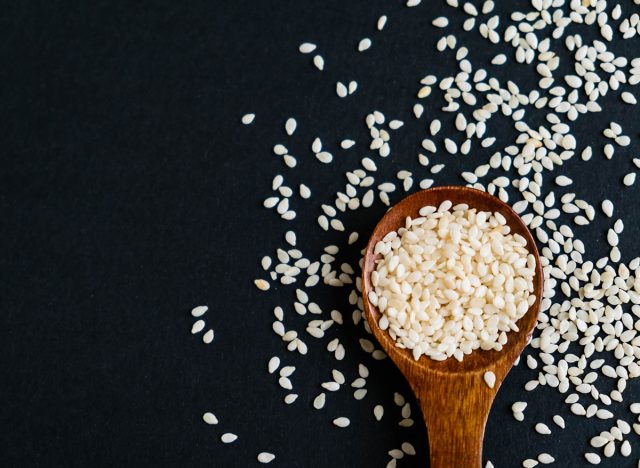
Iron per 1/4 cup: 5.2 mg (29% DV)
Sesame seeds give you almost 30% of your daily value of iron per 1/4 cup, along with protein, fiber, potassium, and selenium—a nutrient necessary for thyroid function, DNA formation, and protection from oxidative stress damage. Because of their deliciously nutty flavor, toasted sesame seeds go great on salads, on top of vegetables, or on your favorite types of bread. Tahini is also made from ground sesame seeds and can be used to make salad dressings, sauces, or hummus.
Fortified Rice Puff Cereal
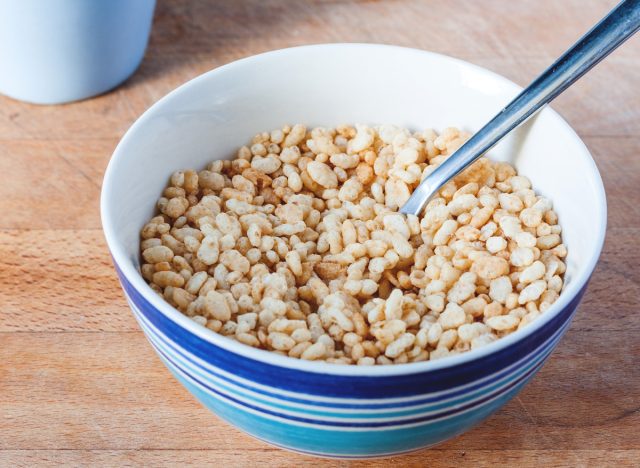
Iron per cup: 4.4 mg (24% DV)
Depending on the brand you buy, cereal can either be a healthy or fairly unhealthy way to start your day. If you eat a bowl of sugary cereal that contains little to no nutrients or vitamins, you may be left feeling hungry way before lunchtime. However, many cereals on the market are fortified, meaning certain vitamins and minerals have been added to it. The average cup of fortified rice puff cereal contains over 4 milligrams of iron, which is 24% of your daily value.
Black Beans
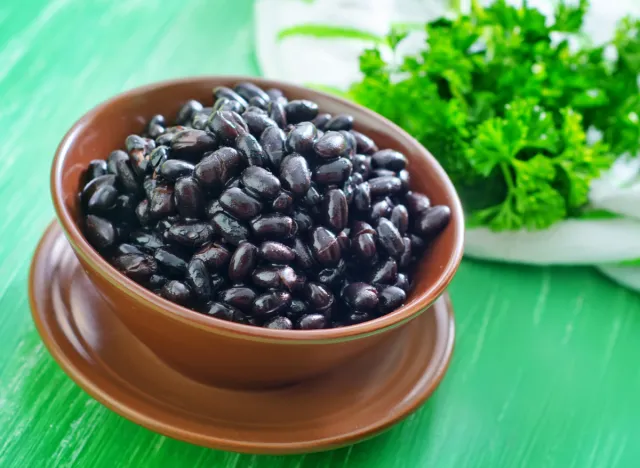
Iron per 1/4 cup: 4 mg (22% DV)
Black beans are some of the healthiest plant-based foods you can add to your diet. Not only are they high in iron, but they provide almost 10 grams of protein and 7 grams of fiber per serving. According to a report on Blue Zone regions published in the American Journal of Lifestyle Medicine, black beans (along with lentils, soybeans, and fava beans) are the "cornerstone of most centenarian diets." In other words, the world's healthiest people dig into beans like these quite often.
White Beans
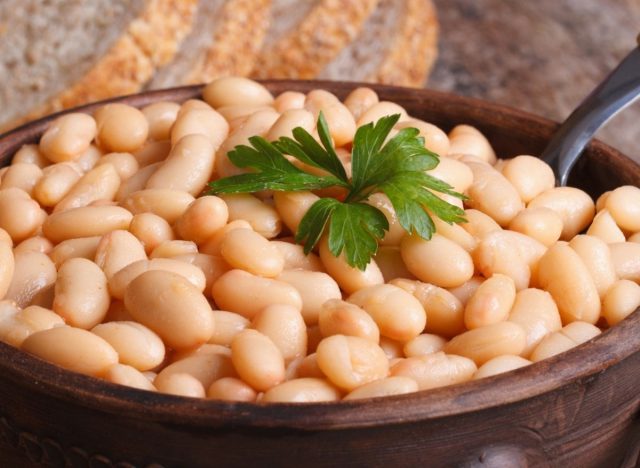
Iron per 1/2 cup, canned: 4 mg (22% DV)
White beans, like cannellini and navy beans, are iron-rich foods that are also great sources of plant-based protein and fiber, with 10 grams of protein and 6 grams of fiber per half-cup serving. Incorporate white beans into your diet in soups, white bean salad, or bean dips to boost your iron intake.
Kidney Beans
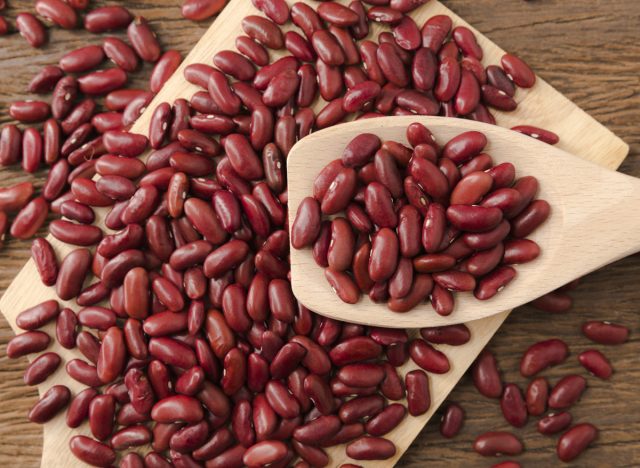
Iron per 1/4 cup: 3.8 mg (21% DV)
Along with carrying a hefty dose of iron per serving, kidney beans also deliver 10 grams of protein and 11 grams of fiber, as well as provide helpful amounts of nutrients like calcium, potassium, and magnesium. These beans go great in a salad, soup, or served up with rice or quinoa.
Lima Beans
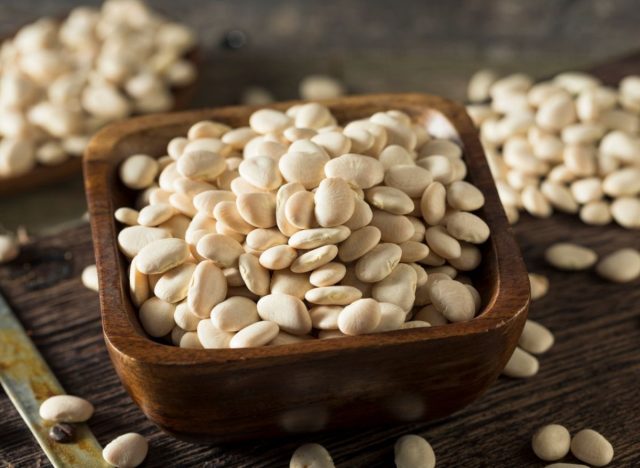
Iron per 1/4 cup: 3.4 mg (19% DV)
Those who have enjoyed butter beans—a classic Southern dish—have also enjoyed lima beans. The two names are interchangeable depending on where you're from, but regardless of what you call these beans, you'll enjoy their nutritious benefits. Lima beans are high in iron with 19% of your daily value per serving, but they are also full of protein, fiber, and calcium, and they contain 33% of your daily value of potassium.
Tofu
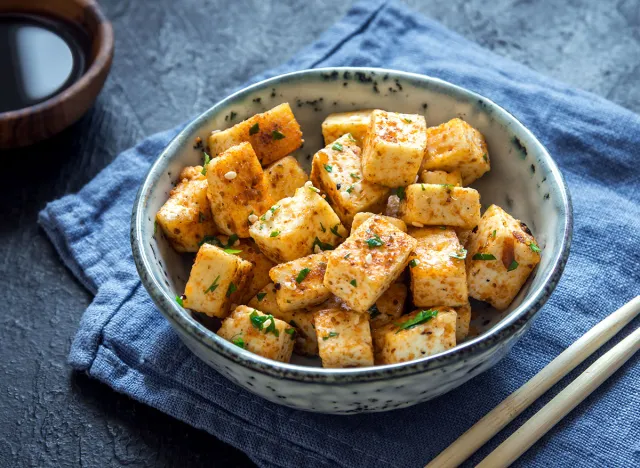
Iron per 1/2 cup, firm: 3.4 mg (19% DV)
Tofu makes for a great plant-based protein option for those who want to avoid meat because it provides about 21 grams per 1/2 cup, and it's one of the few plant proteins that is considered "complete," meaning it contains all nine essential amino acids that your body needs for protein synthesis. Aside from being rich in protein, tofu can give you about 17% of your daily value of iron, too. You can eat tofu by frying it, sauteeing it in a pan, or blending it into a sauce or smoothie.
Lentils
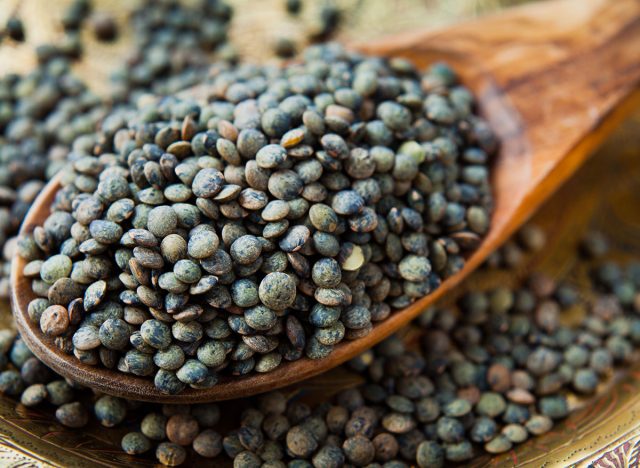
Iron per 1/2 cup, boiled: 3.3 mg (18% DV)
Lentils are another helpful plant-based source of protein, fiber, and iron. However, while tofu is considered a complete protein, lentils are "incomplete," meaning they are missing some of the nine essential amino acids. This doesn't mean they aren't valuable, but if you're going to eat them to enjoy their iron and protein content, try balancing them out with a complete protein source like meat, poultry, tofu, or tempeh.
Spinach
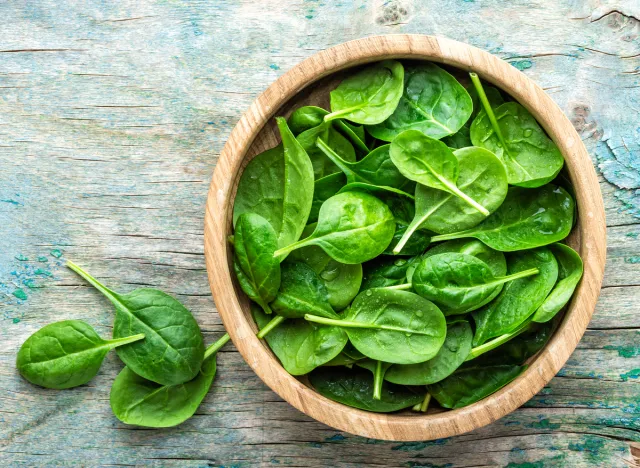
Iron per 1/2 cup, boiled: 3.2 mg (18% DV)
Popeye loved his spinach and ate it for strong muscles, and while spinach alone isn't enough for muscle building, you can get a boost of iron with each serving. Along with iron, spinach can also provide a decent amount of protein, potassium, calcium, and vitamin K.
Skirt Steak
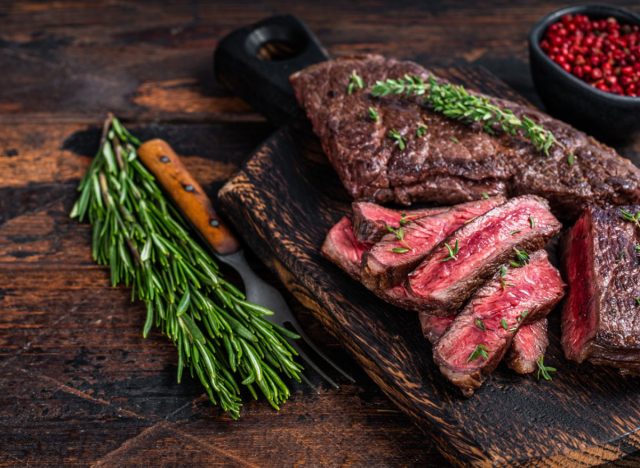
Iron per 3 ounces: 2.4 mg (13%)
If you're in the mood to treat yourself to a tender, juicy steak, the decision to do so will give you more than just a satisfying meal. You'll also get an iron boost with around 2.4 milligrams (13% of your daily value), as well as 22 grams of protein and most of your B vitamins.
Ground Beef
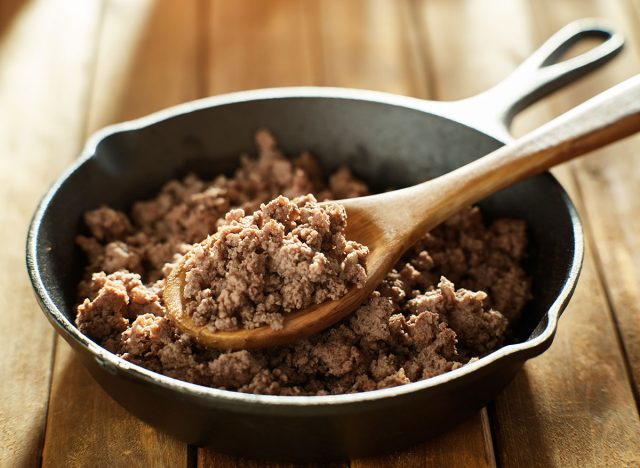
Iron per 3 ounces of ground beef: 2.3 mg (13% DV)
All cuts of beef contain heme iron, but one of the easiest and cheapest ways to get the most iron for your buck is with ground beef. Throw some into tacos, cook it into a spaghetti sauce, or saute and enjoy with other high-iron foods like spinach and beans.
If you're feeling daring and really want an iron boost, eating beef spleen will give you 186% of your daily value! But seeing as this may not be super appetizing to most, you can stick with ground beef and still enjoy the heme iron benefits.
Dark chocolate
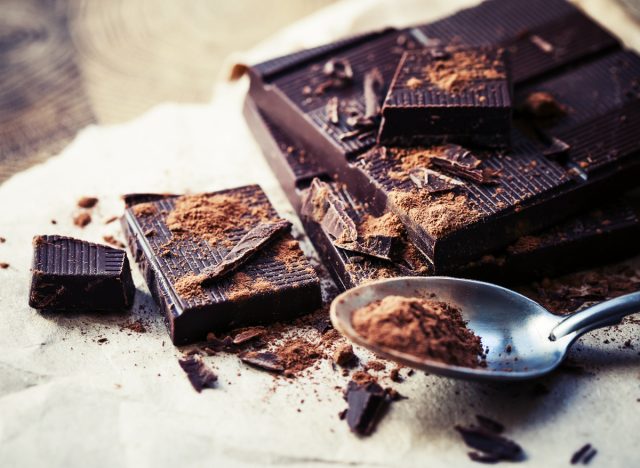
Iron per 1 ounce: 2.3 mg (13% DV)
If you've ever felt guilty for craving chocolate when you're menstruating, we have information you'll appreciate. Because those who menstruate tend to lose blood during their period, it also means they are often lower in iron during this time. Next time you're on your period and hankering for chocolate, don't hesitate to grab some—especially dark chocolate. In just one ounce of dark chocolate you'll get about 11% of your daily value of iron, and 72% in an entire bar!
Pumpkin Seeds
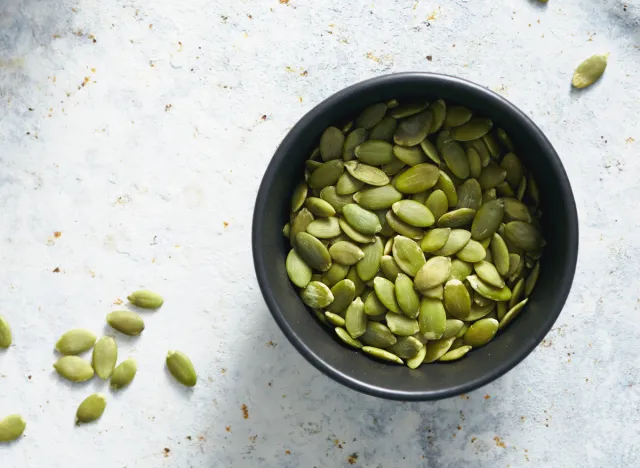
Iron per ounce: 2.3 mg (13% DV)
Pumpkin seeds are more than just part of the gunk you scrape out of your Jack-o'-lantern during October. These seeds can be a tasty snack when roasted and salted, and they provide an enormous boost of health benefits—including 13% of your daily value for iron. Along with iron, you'll enjoy the pumpkin seed benefits of protein, fiber, healthy fats, manganese, selenium, and folate.
Russet Potato
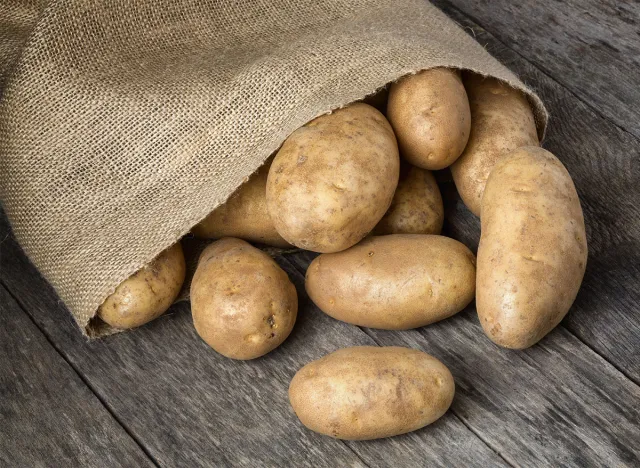
Iron per medium potato: 1.85 mg (10% DV)
Whether you're making a baked potato, some homemade fries, or some hashbrowns for your Sunday breakfast, russet potatoes can give you a dose of iron. With 10% of your daily value, potatoes make for an easy and affordable iron-rich food.
Canned Tuna
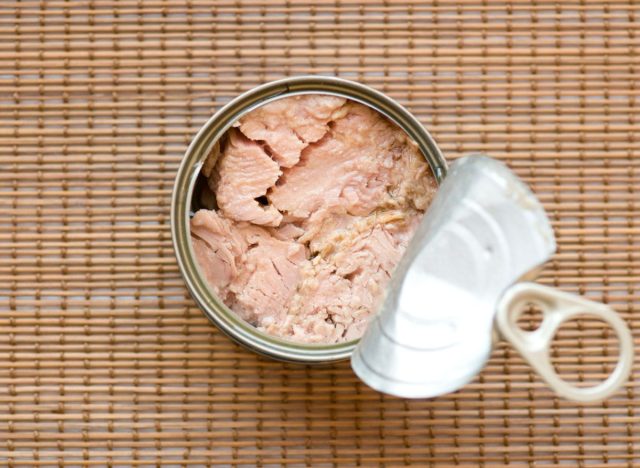
Iron per can: 1.8 mg (10% DV)
If you're in a hurry and need a quick lunch or snack that is going to give your body some iron, grabbing a can of tuna and making a tuna salad sandwich is an easy solution. With 1.8 milligrams per average can of tuna, this fish can give you around 10% of your daily value of iron. Not only that, but tuna is an incredible source of protein and healthy fats, too.
Lamb
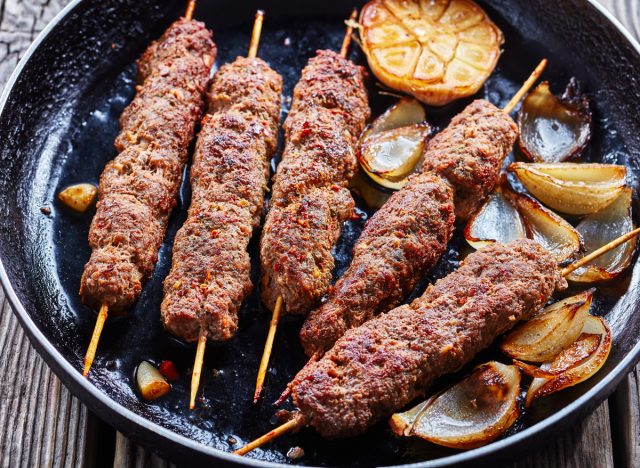
Iron per 4 ounces of ground lamb: 1.75 mg (10% DV)
You can find iron in almost any variety of red meat, but certain cuts and animals contain more than others. For about 10% of your daily value of iron, cook up some ground lamb in Greek-style meatballs or Middle Eastern kofta kebabs for you and the family. If you like lamb chops, a 3-ounce portion of those will deliver 7% of your recommended daily iron intake.
Similarly to beef, the spleen of a lamb is also the organ with the most iron, providing 183% of your daily value. But for those in need of an easier (and more enjoyable) iron boost, lamb chops will work just fine.
- Source: https://ods.od.nih.gov/factsheets/Iron-Consumer/#:~:text=Iron%20is%20a%20mineral%20that,iron%20to%20make%20some%20hormones.
- Source: https://www.hsph.harvard.edu/nutritionsource/iron/
- Source: https://ods.od.nih.gov/factsheets/Iron-Consumer/#:~:text=Iron%20is%20a%20mineral%20that,iron%20to%20make%20some%20hormones.
- Source: https://ods.od.nih.gov/factsheets/Iron-Consumer/#:~:text=Iron%20is%20a%20mineral%20that,iron%20to%20make%20some%20hormones.
- Source: https://www.accessdata.fda.gov/scripts/cdrh/cfdocs/cfcfr/cfrsearch.cfm?fr=101.54
- Source: https://fdc.nal.usda.gov/fdc-app.html#/food-details/171980/nutrients
- Source: https://fdc.nal.usda.gov/fdc-app.html#/food-details/168626/nutrients
- Source: https://fdc.nal.usda.gov/fdc-app.html#/food-details/175204/nutrients
- Source: https://ods.od.nih.gov/factsheets/Selenium-HealthProfessional/#:~:text=Selenium%2C%20which%20is%20nutritionally%20essential,damage%20and%20infection%20%5B1%5D.
- Source: https://fdc.nal.usda.gov/fdc-app.html#/food-details/173912/nutrients
- Source: https://fdc.nal.usda.gov/fdc-app.html#/food-details/175186/nutrients
- Source: https://www.ncbi.nlm.nih.gov/pmc/articles/PMC6125071/
- Source: https://fdc.nal.usda.gov/fdc-app.html#/food-details/175193/nutrients
- Source: https://fdc.nal.usda.gov/fdc-app.html#/food-details/174252/nutrients
- Source: https://ods.od.nih.gov/factsheets/Potassium-HealthProfessional/#:~:text=The%20DV%20for%20potassium%20is,contribute%20to%20a%20healthful%20diet.
- Source: https://fdc.nal.usda.gov/fdc-app.html#/food-details/172475/nutrients
- Source: https://health.clevelandclinic.org/do-i-need-to-worry-about-eating-complete-proteins/
- Source: https://fdc.nal.usda.gov/fdc-app.html#/food-details/172421/nutrients
- Source: https://health.clevelandclinic.org/do-i-need-to-worry-about-eating-complete-proteins/
- Source: https://fdc.nal.usda.gov/fdc-app.html#/food-details/170531/nutrients
- Source: https://fdc.nal.usda.gov/fdc-app.html#/food-details/168744/nutrients
- Source: https://fdc.nal.usda.gov/fdc-app.html#/food-details/174035/nutrients
- Source: https://fdc.nal.usda.gov/fdc-app.html#/food-details/174035/nutrients
- Source: https://fdc.nal.usda.gov/fdc-app.html#/food-details/170597/nutrients
- Source: https://fdc.nal.usda.gov/fdc-app.html#/food-details/170271/nutrients
- Source: https://fdc.nal.usda.gov/fdc-app.html#/food-details/169415/nutrients
- Source: https://fdc.nal.usda.gov/fdc-app.html#/food-details/170030/nutrients
- Source: https://fdc.nal.usda.gov/fdc-app.html#/food-details/334194/nutrients
- Source: https://fdc.nal.usda.gov/fdc-app.html#/food-details/174370/nutrients
- Source: https://fdc.nal.usda.gov/fdc-app.html#/food-details/174365/nutrients

